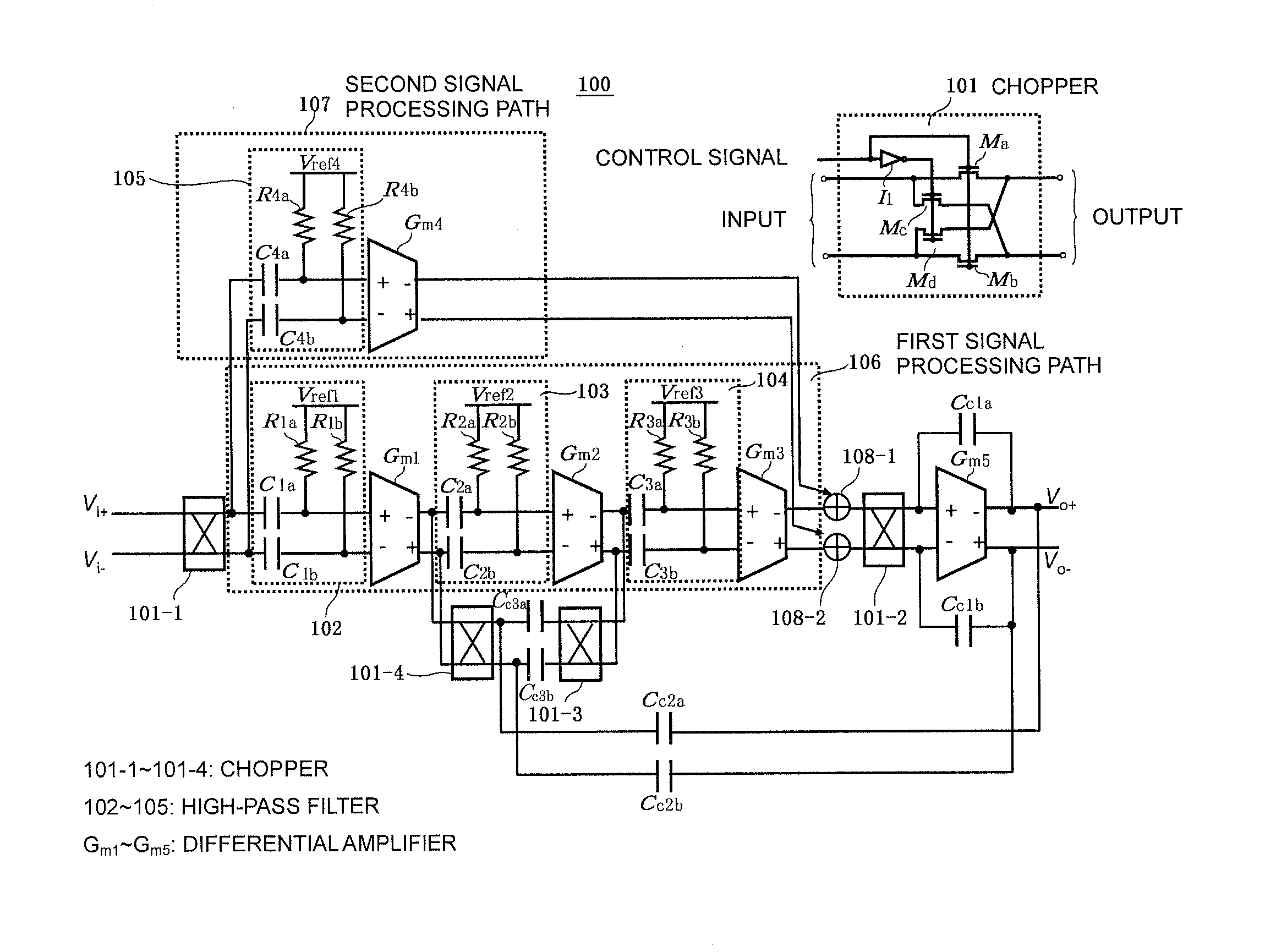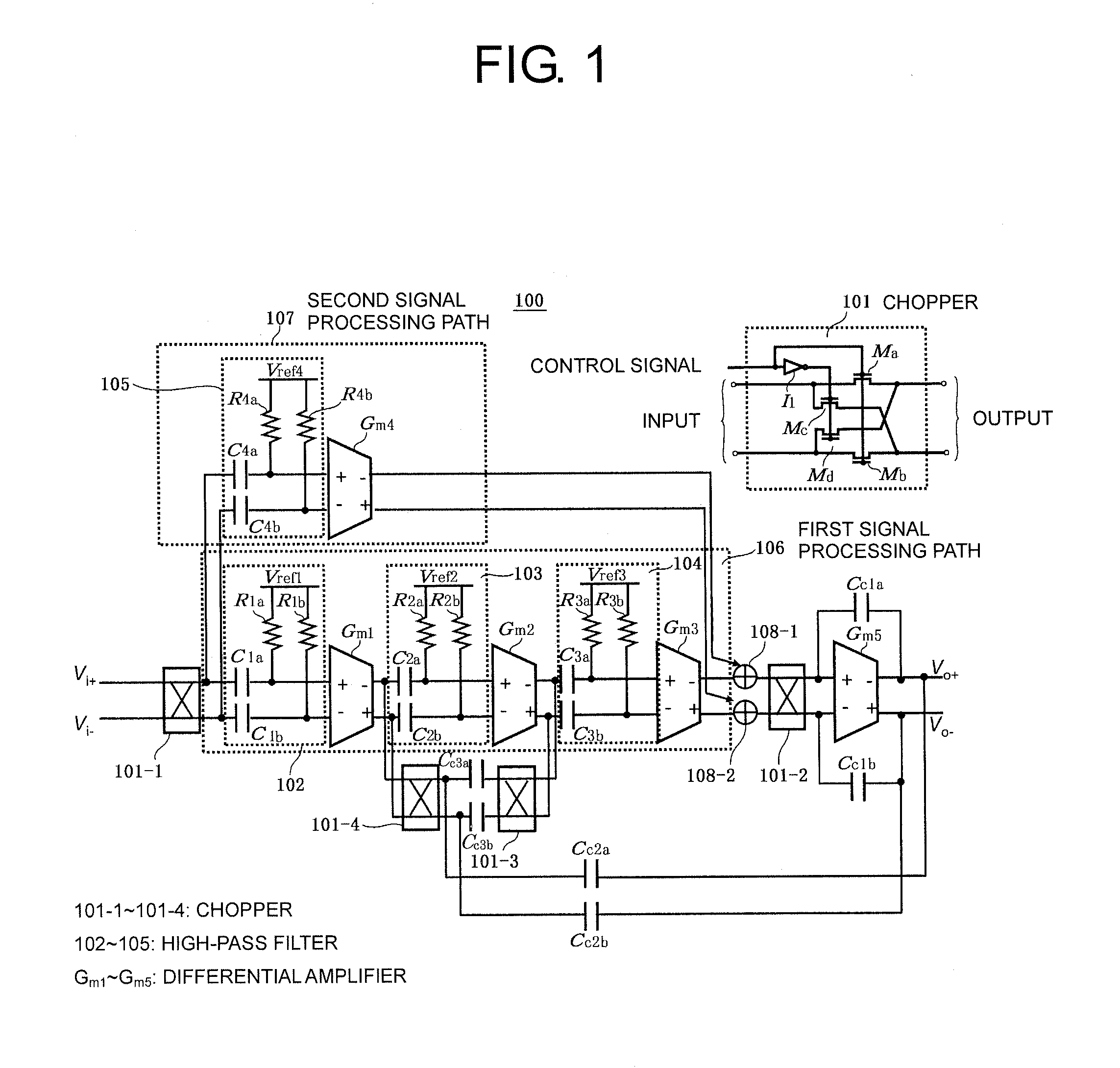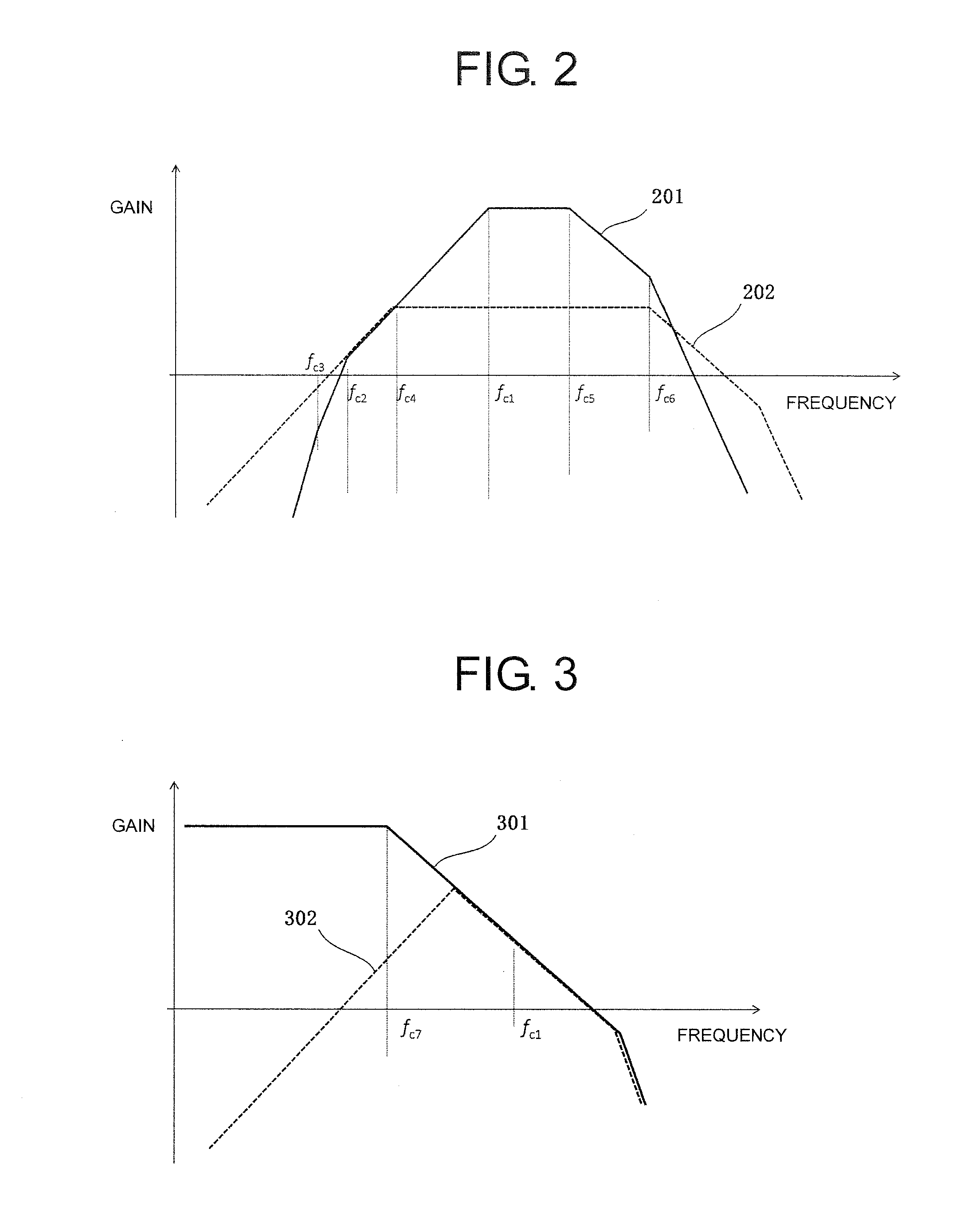Operational amplifier
a technology of operation amplifier and amplifier, which is applied in the direction of amplifier with semiconductor device/discharge tube, amplifier using switched capacitor, etc., can solve the problem of absolute loss of circuit gain, and achieve the effect of effective operation and decreasing gain
- Summary
- Abstract
- Description
- Claims
- Application Information
AI Technical Summary
Benefits of technology
Problems solved by technology
Method used
Image
Examples
first embodiment
Second Variation of First Embodiment
[0050]In the embodiment and its variation shown in FIGS. 1 and 4, the high-pass filter 103 can be omitted accordingly in such a case that the differential amplifier Gm2 receives the outputs from the differential amplifier Gm1 as they are.
second embodiment
[0051]FIG. 5 shows the circuit diagram of a second embodiment of the operational amplifier according to the present invention. In this figure, the same components as those in FIG. 4 are denoted by the same symbols. An operational amplifier 500 of the second embodiment shown in FIG. 5 is a chopper-stabilized operational amplifier operating as a fully differential amplifier by including two circuit units 151a and 151b equivalent to the circuit unit 151 enclosed by the dashed line in FIG. 4 to serve as third and fourth signal processing paths, respectively, providing a class-AB amplifier for non-inverted output 501 and a class-AB amplifier for inverted output 502, inputting inverted signals output from the respective third and fourth signal processing paths 151a, 151b to the class-AB amplifier for non-inverted output 501 through the choppers, and inputting non-inverted signals output from the respective third and fourth signal processing paths 151a, 151b to the class-AB amplifier for i...
third embodiment
[0060]FIG. 6 shows the circuit diagram of a third embodiment of the operational amplifier according to the present invention. In this figure, the same components as those in FIG. 1 are denoted by the same symbols, and the explanation thereof is omitted. An operational amplifier 600 of the third embodiment shown in FIG. 6 is a chopper-stabilized operational amplifier where the circuit unit from the output stage of the differential amplifier Gm1 to the input stage of the summing elements 108-1, 108-2 in the operational amplifier 100 of the first embodiment shown in FIG. 1 is replaced by a high-pass filter 109, a non-inverting differential amplifier Gm20, and a chopper 101-8.
[0061]In other words, in FIG. 6, the output nodes (non-inverting and inverting output terminals) of the differential amplifier Gm1 are connected to the input nodes (non-inverting and inverting input terminals) of the non-inverting differential amplifier Gm20 via the high-pass filter 109. The high-pass filter 109 in...
PUM
 Login to View More
Login to View More Abstract
Description
Claims
Application Information
 Login to View More
Login to View More - R&D
- Intellectual Property
- Life Sciences
- Materials
- Tech Scout
- Unparalleled Data Quality
- Higher Quality Content
- 60% Fewer Hallucinations
Browse by: Latest US Patents, China's latest patents, Technical Efficacy Thesaurus, Application Domain, Technology Topic, Popular Technical Reports.
© 2025 PatSnap. All rights reserved.Legal|Privacy policy|Modern Slavery Act Transparency Statement|Sitemap|About US| Contact US: help@patsnap.com



